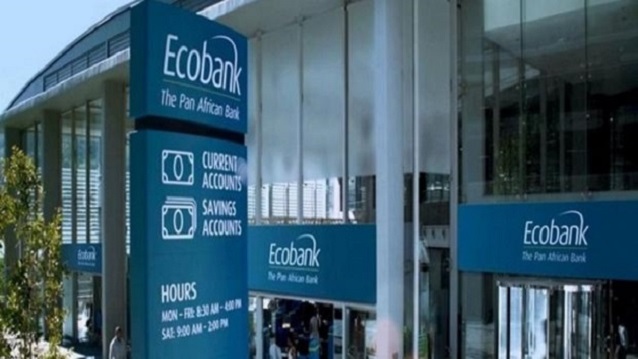E-Financial
Nigeria’s “Too Big to Fail” Banks Shop for N405Bn Lifeline

Banks in Nigeria particularly the big four banks considered “too big to fail” are all in the market shopping for some N405 billion from both local and foreign sources to shore up their cash reserves.
Experts who should know also said that the banks are taking advantage of a drop in borrowing costs before the Central Bank of Nigeria (CBN) increases how much capital they need to hold.
Banks may raise as much as N405 billion ($2.5 billion) this year compared with N342 billion ($2 billion) in 2013, according to FBN Capital, the investment-banking unit of Nigeria’s largest bank by assets FBN Holdings Plc.
Nigeria’s central bank last month changed the way lenders calculate capital buffers to align with global standards and increase their ability to withstand losses.
The CBN action is preparatory to tap into the G-20 proposal that will require top banks in the country to issue special bonds as capital that can assist them in times of crises.
In the international financial community government leaders are expected to agree in November that the world’s top banks must issue special bonds to increase the amount of capital which can be tapped in a crisis instead of calling on taxpayers to come to the rescue.
The bonds, to be known as “Gone Concern Loss Absorption capacity” or GLAC, are seen by regulators as essential to stopping the world’s biggest banks from being “too big to fail.
According to international financial sources the plans are being drafted by the Financial Stability Board, the regulatory task force of the Group of 20 economies which declined to comment ahead of a G20 summit in November, when G20 leaders will discuss the reform before it is put out to public consultation.
The reform would put in place the final major piece of G20 regulation on banking as the global body turns to a “post-crisis” agenda of fostering economic growth and bedding down the rules it has approved.
There had been unease in Asia and parts of Europe over how big the bond issues need to be to provide this cushion but there is now a new optimism amongst bankers and regulators that the G20 will reach a deal in November.
“The industry is definitely in favor of making resolution, supported by an appropriately flexible concept of GLAC, work.
That is the key pending aspect on ending too-big-to-fail,” said Andres Portilla, director of regulatory affairs at the Institute of International Finance, a Washington-based banking and insurance lobby.
The CBN ordered Nigerian banks it considered too big to fail to boost minimum capital ratios to 16 per cent last year, compared with 10.5 per cent for South African banks, which control most of the continent’s banking assets.
The central bank removed some assets banks can count as capital in preparation for the implementation of Basel II and III, while limiting Tier 2 capital to 33 per cent of Tier 1 capital, according to its August 5th circular.
Minimum capital requirements for banks with operations outside the country were kept at 15 per cent and at 10 per cent for those with interests only in Nigeria.
The changes will shave 100 to 400 basis points off the capital adequacy ratios of most banks. The central bank increased cash-reserve requirements on deposits made by government ministries and agencies and state-owned companies to 75 per cent from 50 per cent last year.
It also raised requirements on private deposits to 15 per cent from 12 per cent in March to reduce liquidity and support the naira.
The capital changes are making it “tougher for banks to generate profits to pay as dividends,” Richard Segal, head of international credit strategy at Jefferies International Ltd. in London, said in an e-mailed reply to questions.
Higher spending by government and politicians before elections in February may cause foreign outflows at the same time as banks seek to finance power, oil exploration and manufacturing projects to feed an economy forecast to expand 6 percent in 2014.
E-Financial
NIBBS: Banks Close 29.4m Accounts, Dormant Accounts Hit 33.39m

Banks in Nigeria closed 29.4 million accounts as of March 2025, according to the latest report by the Nigerian Interbank Settlement System (NIBSS).

The figure represents a sharp year-on-year increase of 30.43 per cent from the 22.54 million closed accounts recorded in March 2024.
It also reflects a steady rise in account closures over recent months, with 33.29 million closed accounts reported in February 2025 and 29.43 million in January.
The report also revealed a significant increase in dormant accounts, which surged to 33.39 million in March 2025, up from 19.79 million in the same period in 2024, a 71.3 per cent rise in inactive accounts over the past year.
Despite the spike in closures and dormant accounts, the number of active bank accounts rose from 219.64 million in March 2024 to 320.05 million in March 2025, representing an increase of over 100 million, or 45.7 per cent.
NIBSS defines a dormant account as one that has seen no deposit, withdrawal, transfer, or point-of-sale transaction for a period of six months.
The surge in account closures and dormancy follows the Central Bank of Nigeria’s directive issued in December 2023, mandating commercial banks to restrict Tier-1 accounts not linked to a Bank Verification Number (BVN) and National Identification Number (NIN) by March 1, 2024.
In response to the directive, BVN enrolment increased from 61.6 million in April 2024 to 66.23 million by July 2025, as more Nigerians rushed to meet the CBN’s compliance deadline.
E-Financial
Cardoso, CBN Boss Risks Arrest over Alleged N5.2 Trillion Unremitted Funds

The Joint Committee of the House of Representatives on Public Accounts and Public Assets has threatened to issue a warrant of arrest against Mr. Olayemi Cardoso, governor of the Central Bank of Nigeria (CBN), over repeated failure to honour its invitations regarding the probe into non-compliance with the Fiscal Responsibility Act 2007 and Finance Act 2020.

Olayemi Cardoso,, Gov, CBN
In a joint statement released on Friday and signed by Hon. Bamidele Salam and Hon. Ademorin Kuye, chairmen of the committees, the lawmakers decried the CBN governor’s continued disregard for legislative summons.
The committee is investigating the non-remittance of operating surplus as well as the mismanagement of unclaimed dividends and dormant account balances.
According to the committee, the Office of the Auditor General for the Federation reported a liability of N5.2 trillion in unremitted operating surplus due to the federal government from 2016 to 2022; a claim corroborated by the Fiscal Responsibility Commission in a separate submission to the National Assembly.
The committee cited provisions of the Finance Act 2020, which mandate that unclaimed dividends from publicly listed companies and dormant bank account balances older than six years be transferred into the Unclaimed Fund Trust Fund. The fund is to be managed by a Governing Council led by the Minister of Finance and the Debt Management Office (DMO).
Contrary to this, the CBN maintains that the Financial Institutions Act 2020 empowers it to manage dormant balances.
However, the committee noted that the Attorney General of the Federation has issued a legal opinion affirming that the Finance Act 2020 remains the valid law guiding the management of such funds.
Following extensive submissions, the committee resolved that the CBN must remit N3.64 trillion, representing 70% of the undisputed N5.2 trillion operating surplus, within 14 days from receipt of its June 27, 2025, directive, pending final reconciliation of the disputed amount.
Additionally, the apex bank was directed to submit a detailed report on the total sum of unclaimed dividends and dormant account balances by June 30, 2025.
The CBN was also ordered to transfer these funds into the Unclaimed Fund Trust Fund within 14 days and furnish the House with evidence of the transaction.
The lawmakers expressed frustration that, despite the clear directives and ample time, the CBN governor has failed to respond or appear before the joint committee to provide an explanation.
“In view of this continued defiance, the Committee will be compelled to exercise its constitutional powers to compel Mr. Olayemi Cardoso to appear before it,” the statement warned.
E-Financial
Moody’s Upgrades Ecobank’s Outlook to Stable

Moody’s has upgraded the outlook on Ecobank Transnational Incorporated’s long-term issuer and senior unsecured debt ratings to stable from negative.

In the latest rating commentary, made available to media on Thursday, Moody’s also affirmed the pan-African banking group’s B3/Not Prime long- and short-term issuer ratings; B3 senior unsecured debt rating; b2 notional Baseline Credit Assessment and b1 Adjusted BCA.
ETI’s subsidiaries operate across 38 countries, including 35 African countries, and total assets of $28.9bn as of March 2025, details from the rating note highlighted. Moody’s said the decision to change the outlook to stable on the long-term issuer and senior unsecured ratings reflects ETI’s resilient financial performance.
The rating upgrade also takes into consideration higher dividends being upstreamed to ETI, resulting in lower double leverage and reduced refinancing risk.
The rating adjustment also reflects an expectation that the recapitalisation process of Ecobank Nigeria Limited will be completed by the end of 2025, with limited impact on the group’s financial fundamentals.
“The stable outlook also captures our expectation that a series of capital-boosting initiatives and actions to cure Ecobank Nigeria’s total capital position will be completed before the end of 2025”, according to the ratings agency.
In May 2025, ETI received shareholder approval to raise $250 million in Additional Tier 1 (AT1) capital and announced the launch of the transaction effective 9 July 2025, of which a portion is expected to be downstreamed to Ecobank Nigeria as AT1 capital during Q3 2025.
Ecobank Nigeria’s plan to raise $200m in AT1 capital was noted in the rating note. The ratings analysts said they consider
“We also note that Ecobank Nigeria’s recent successful offer to tender $150m of its February 2026 $300 million notes and consent to remove the capital adequacy ratio covenant from this bond’s terms alleviates risks of an event of default in Nigeria that would trigger cross default at the ETI level. Over the past year, ETI has shown resilience in its financial performance, which supports our change in outlook to stable. Liquidity risks are being moderated by the group’s gradually improving profitability during 2024 and Q1-2025.
“This has translated into a 22 per cent increase in dividends upstreamed to ETI during 2024, these being received from 22 dividend-paying subsidiaries compared to just 14 in 2021,” the rating commentary revealed.
In turn, albeit high, ETI’s double leverage ratio, which measures the liquidity risk taken on by the holding company, as a result of it borrowing in order to invest in the equity of its subsidiaries, has eased to 168 per cent as of December 2024 from 173 per cent in 2023.
Additionally, the stable outlook reflects reduced liquidity risk at the holding company level with the refinancing of short-term liabilities in 2024 with longer-term funding.
Moody’s said this is underpinned by demonstrated market access, notably through senior unsecured notes issuance of $400m in October 2024 and a tap increase of $125m in May 2025, maturing in October 2029.
ETI’s B3 long-term issuer ratings affirmation reflects the affirmation of the group’s b2 notional BCA; the affirmation of the group’s b1 adjusted BCA as captured by a one-notch uplift for affiliate support, reflecting Moody’s assessment of a moderate probability that the firm’s major institutional shareholders would extend support to the group. Moody’s said asset quality for the group has improved over recent years.

 E-Business1 day ago
E-Business1 day agoTranscorp Hotels Delivers Stellar H1 Results, Declares Over ₦1Bn Dividend

 Telecom2 days ago
Telecom2 days agoAirtel Africa Grew Customer Base to 169m as Q1 Revenue Hits $1.4 Billion

 General News2 days ago
General News2 days agoFintechNGR Rejigs Nigeria Fintech Week with Multi-location Model

 Broadcasting2 days ago
Broadcasting2 days agoParadigm Initiative Applauds Malawi’s Judiciary for Outlawing Criminal Defamation

 General News2 days ago
General News2 days agoGuinness Nigeria Sustains Growth Momentum in Q4 Amid Market Headwinds

 E-Financial2 days ago
E-Financial2 days agoMoody’s Upgrades Ecobank’s Outlook to Stable

 E-Financial2 days ago
E-Financial2 days agoSEC Grants “No objection” to N323Bn First Holdco Shares Deal

 Telecom2 days ago
Telecom2 days agoNITRA-ALTON CNII & Sustainability Conference Rescheduled for August 7 in Lagos
























